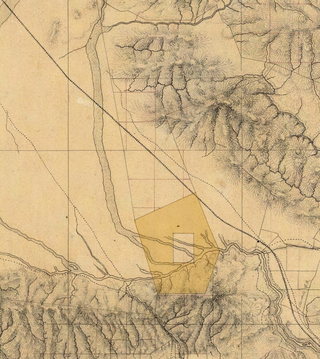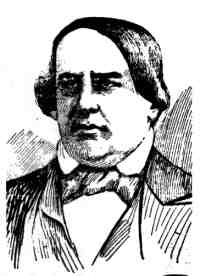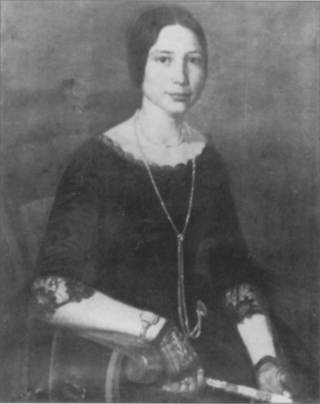San Joaquin may refer to:
Point Lobos Ranch is an 1,315-acre (532 ha) parcel of land owned by the state of California in the northern region of Big Sur, California, United States. San Jose Creek on the ranch was the site of an Ohlone village for thousands of years. Europeans first visited the site when the Portolá expedition camped at the site for 10 days in the winter of 1769.

Rancho Simi, also known as Rancho San José de Nuestra Señora de Altagracia y Simí, was a 113,009-acre (457 km2) Spanish land grant in what is now eastern Ventura and western Los Angeles counties granted in 1795 to Santiago Pico, founder of the Pico family of California. After Santiago Pico's death in 1815, the Rancho was regranted to Santiago's sons Javier Pico and his two brothers, Patricio Pico and Miguel Pico by Diego de Borica. The name derives from Shimiji, the name of a Chumash village in the Simi Valley for thousands of years before the Spanish arrival.
Rancho San Antonio may refer to:

Rancho Petaluma Adobe is a historic ranch house in Sonoma County, California. It was built from adobe bricks in 1836 by order of Mariano Guadalupe Vallejo. It was the largest privately owned adobe structure built in California and is the largest example of the Monterey Colonial style of architecture in the United States. A section of the former ranch has been preserved by the Petaluma Adobe State Historic Park and it is both a California Historic Landmark and a National Historic Landmark. The Rancho Petaluma Adobe State Historic Park is located on Adobe Road on the east side of the present-day town of Petaluma, California.
Diego de Borica (1742–1800) was a Basque colonial Governor of the Californias, from 1794 to 1800.

Rancho Cahuenga was a 388-acre (1.57 km2) Mexican land grant in the San Fernando Valley, in present-day Los Angeles County, California given in 1843 by governor Manuel Micheltorena to José Miguel Triunfo. Rancho Cahuenga is now a part of the city of Burbank, with the Los Angeles River channel running through it. Rancho Cahuenga is often confused with the nearby Campo de Cahuenga, near what is now Universal City, where in 1847 the Articles of Capitulation were signed, ending the Mexican-American War in Alta California.

Rancho El Cajón was a 48,800-acre (197 km2) Mexican land grant in present day San Diego County, California given in 1845 by Governor Pio Pico to María Antonia Estudillo de Pedrorena. The name means "the box" in Spanish, and refers to the valley between hills. The grant encompassed present day El Cajon, Bostonia, Santee, Lakeside, Flinn Springs, and the eastern part of La Mesa. The grant contained the 28-acre (0.11 km2) Rancho Cañada de los Coches grant.

Rancho San Miguel was a 4,443-acre (17.98 km2) Mexican land grant in present-day San Francisco County, California, given in 1845 by Governor Pío Pico to José de Jesús Noé. It included what is now known as Eureka Valley, and extended past Mount Davidson almost to present-day Daly City, and encompassed the present-day San Francisco neighborhoods of Noe Valley, the Castro, Glen Park, Diamond Heights and St. Francis Wood.
Rancho San Miguel was a 4,694-acre (19.00 km2) Mexican land grant in present-day Ventura County, California given in 1841 by Governor Juan Bautista Alvarado to Felipe Lorenzana and Raymundo Olivas. The grant encompassed the area of present-day City of Ventura not within Rancho Ex-Mission San Buenaventura, with the Santa Clara River marking its southern boundary.
Rancho San Simeon was a 4,469-acre (18.09 km2) Mexican land grant in present-day San Luis Obispo County, California given in 1842 by Governor Juan Alvarado to José Ramón Estrada. The grant extended along the Pacific Coast from Rancho Piedra Blanca at Pico Creek, south along the coast to San Simeon Creek, and includes the present-day townsite of San Simeon Acres.
Rancho San Miguelito was a 14,198-acre (57.46 km2) Mexican land grant in present-day San Luis Obispo County, California given in 1842 by Governor Juan Alvarado to Miguel Ávila, and an addition granted in 1846 by Governor Pio Pico. The grant extended along the Pacific coast, and included Point San Luis, San Luis Obispo Bay, and present day Avila Beach.
Rancho El Escorpión was a 1,110-acre (4.5 km2) Mexican land grant in present day Los Angeles County, California given in 1845 by Governor Pío Pico to three Chumash Native Americans - Odón Chijulla, Urbano, and Mañuel. The half league square shaped Rancho El Escorpión was located at the west end of the San Fernando Valley on Bell Creek against the Simi Hills, and encompassed parts of present day West Hills and Woodland Hills.
Rancho Asuncion was a 39,225-acre (158.74 km2) Mexican land grant in present-day San Luis Obispo County, California. It was given in 1845 by Governor Pío Pico to Pedro Estrada. The grant extended along the Salinas River in the Santa Lucia Range, and encompassed present-day Atascadero. Originally, Rancho de le Asuncion was part of the Mission San Miguel Arcángel territory and as such, was part of the Salinan Indian tribal territory.

Rancho San Jacinto Sobrante was a 48,847-acre (197.68 km2) Mexican land grant in present-day Riverside County, California given in 1846 by Governor Pío Pico to María del Rosario Estudillo de Aguirre. The Rancho San Jacinto Sobrante grant was of the surplus or "sobrante" of Jose Antonio Estudillo's Rancho San Jacinto Viejo and Miguel Pedrorena's Rancho San Jacinto Nuevo y Potrero. The grant encompassed present day Lake Mathews. At the time of the US patent, Rancho San Jacinto Sobrante was a part of San Bernardino County. The County of Riverside was created by the California Legislature in 1893 by taking land from both San Diego and San Bernardino Counties.

Rancho San Jacinto Nuevo y Potrero was a 48,861-acre (197.73 km2) Mexican land grant in present-day Riverside County, California given in 1846 by Governor Pío Pico to Miguel Pedrorena. At the time of the US Patent, Rancho San Jacinto Nuevo y Potrero was a part of San Diego County. The County of Riverside was created by the California Legislature in 1893 by taking land from both San Bernardino and San Diego Counties. The grant encompassed present-day Lake Perris.
Rancho Punta de Laguna was a 26,648-acre (107.84 km2) Mexican land grant in present day northern Santa Barbara County, California, and southern San Luis Obispo County given in 1844 by Governor Manuel Micheltorena to Luis Arellanes and Emigdio Miguel Ortega. The name of this rancho means "point of the lagoon" and refers to the irregular lake lying within its territory. The grant is east of Rancho Guadalupe and encompasses present day Santa Maria and Betteravia.
Rancho Atascadero was a 4,348-acre (17.60 km2) Mexican land grant in present-day San Luis Obispo County, California.
Rancho Las Aromitas y Agua Caliente, commonly known as Rancho Las Aromas, was a 8,660-acre (35.0 km2) Mexican land grant in present-day San Benito County, California given in 1835 by Governor José Castro to Juan Miguel Anzar. The name means "little perfumes and hot spring" and refers to nearby sulfur springs. The grant is close to the Santa Cruz County, California line and encompassed present-day Aromas.
Rancho Los Carneros was a 1,629-acre (6.59 km2) Mexican land grant in present day Monterey County, California given in 1842 by Governor Juan B. Alvarado to María Antonia Linares. The name means "sheep". The grant was near the San Benito County, California line and south of Rancho Cañada de la Carpenteria.





